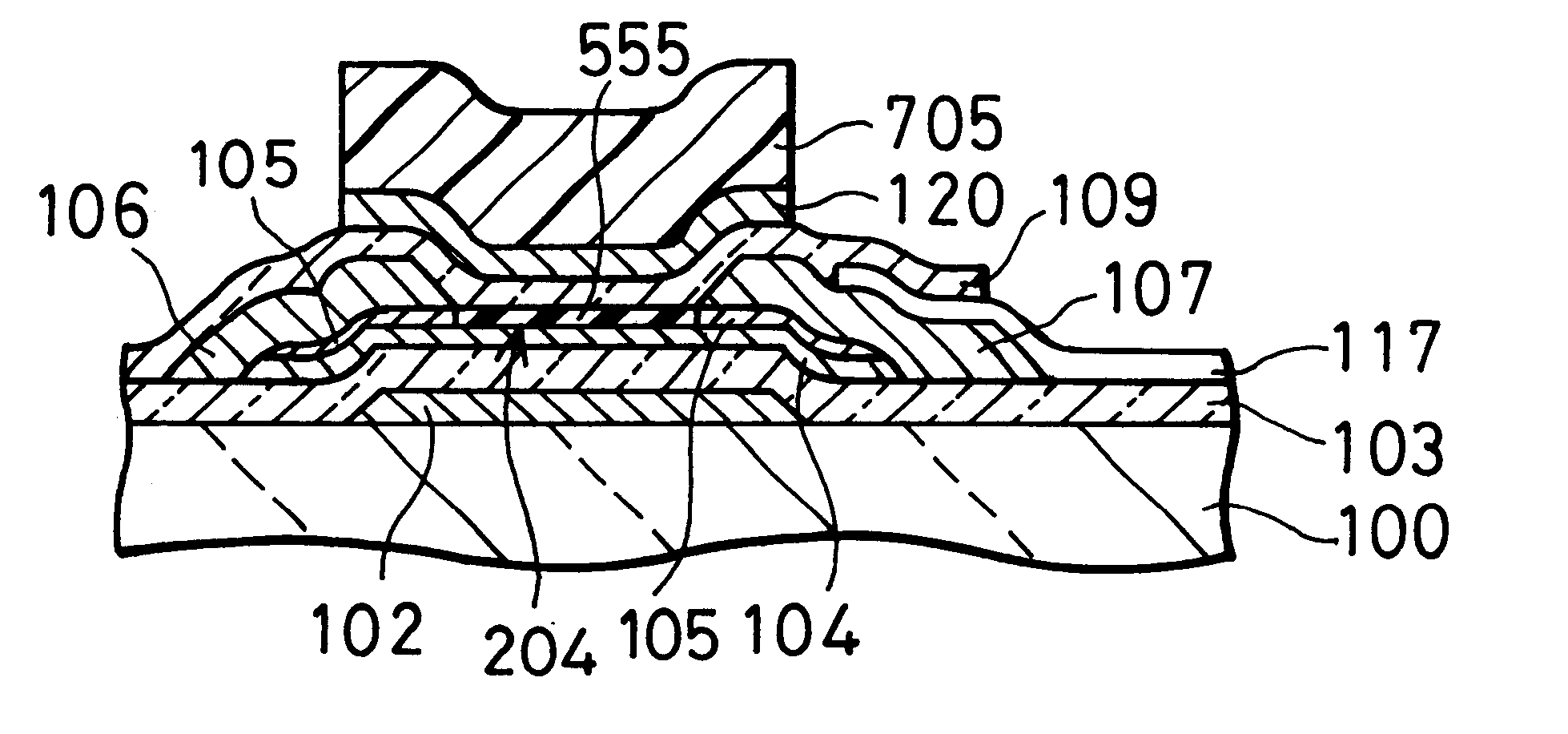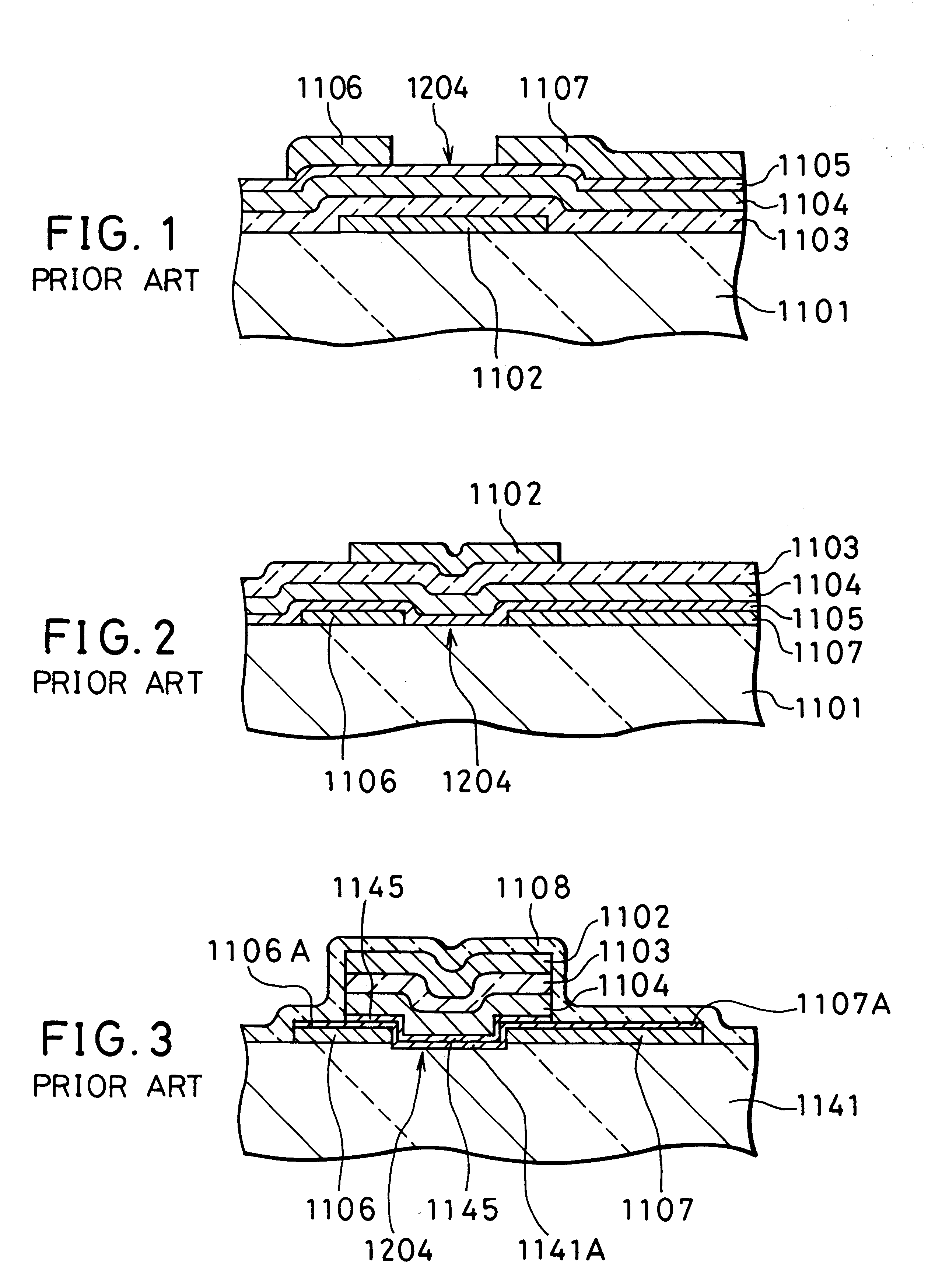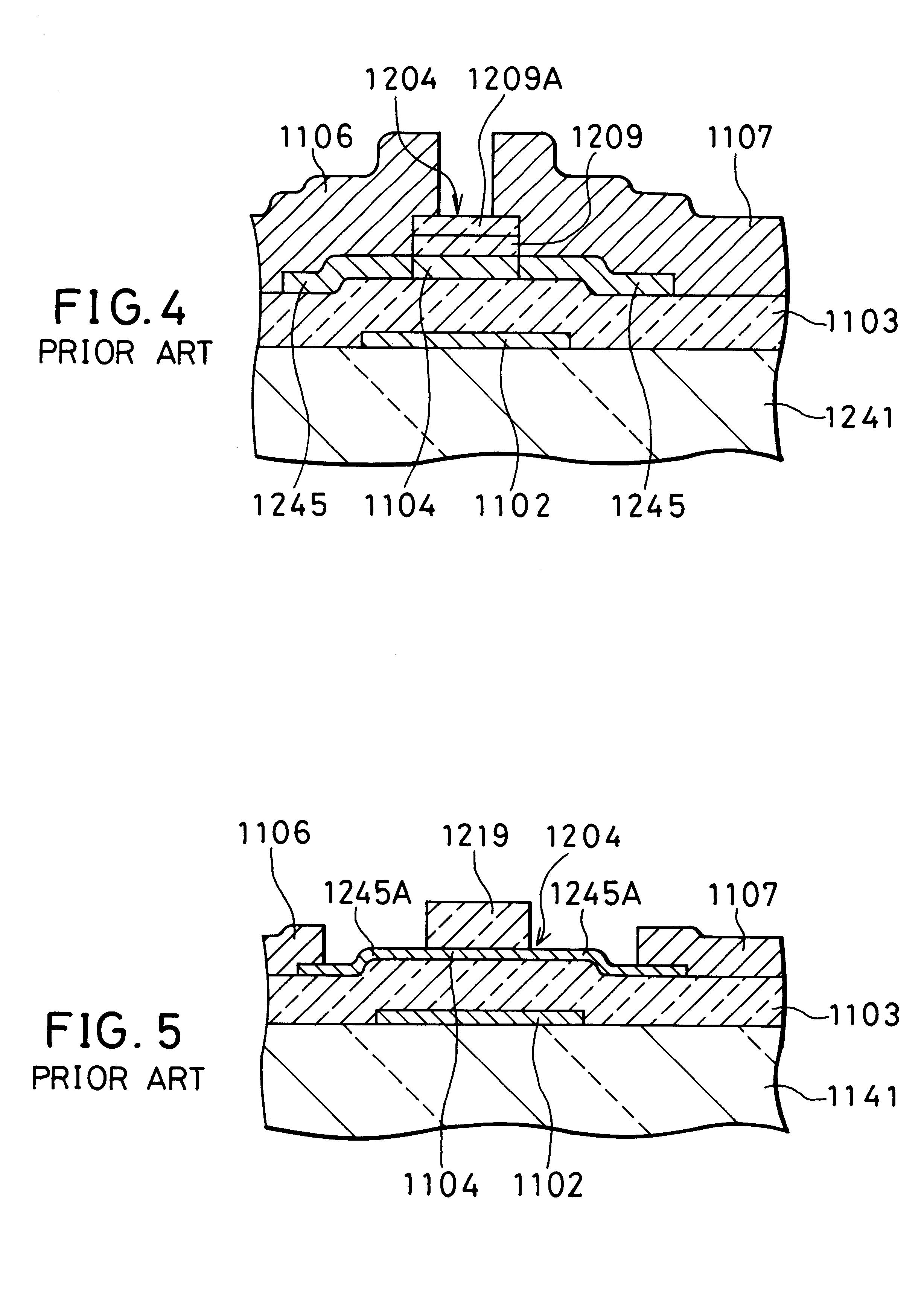Thin-film transistor having a high resistance back channel region and fabrication method thereof
a technology of back channel region and thin film, which is applied in the direction of transistors, semiconductor devices, electrical equipment, etc., can solve the problems of n.sup.+-type amorphous silicon film 1105 having a high off-resistance of 10.sup.9 .omega or higher, and the inability to provide a good operational characteristic and reliability with a good fabrication yield
- Summary
- Abstract
- Description
- Claims
- Application Information
AI Technical Summary
Problems solved by technology
Method used
Image
Examples
first embodiment
A thin-film transistor according to the invention is of an inverted staggered type, as shown in FIG. 9.
A gate electrode 102 is formed on a substrate 100 made of a quartz glass. The gate electrode 102 is formed by a patterned chromium (Cr) film (200 nm thick). A silicon nitride (SiN.sub.x) film (300 nm thick), which serves as a gate insulating film 103, is formed on the substrate 100 to cover the gate electrode 102.
An undoped, hydrogenated amorphous silicon (Si) film (30 nm thick) 104 is formed on the gate insulating film 103. An electrically conductive channel is formed in the film 104 under application of a suitable gate voltage. An n.sup.+ -type hydrogenated amorphous silicon film (5 nm thick) 105, which is doped with phosphorus, is formed on the film 104. The n.sup.+ -type hydrogenated amorphous silicon film 105 serves to form source and drain contact regions. The two hydrogenated amorphous silicon films 104 and 105 are patterned to be an island to be opposed to (or, be overlappe...
second embodiment
FIG. 11 shows a thin-film transistor according to a second embodiment, which is of a staggered type.
In FIG. 11, a silicon oxide (SiO.sub.x) film 229 (400 nm thick) is deposited on a substrate 100 made of a soda-lime glass. A silicon nitride (SiN.sub.x) film may be used instead of the silicon oxide film.
A source electrode 107, a drain electrode 106, and a pixel electrode 117 are formed on the silicon oxide film 229. The source electrode 107 is unified with the pixel electrode 117. The source, drain, and pixel electrodes 107, 106, and 117 are formed by patterning an ITO film (100 nm thick).
On the source electrode 107, the drain electrode 106, and the area between these electrodes 107 and 106, a non-doped hydrogenated amorphous silicon film 104 (20 nm thick), a gate insulating film 103 made of a silicon nitride (SiN.sub.x) film (200 nm thick), and a gate electrode 102 made of a molybdenum (Mo) film (250 nm thick) are formed to be stacked. The silicon film 104, the gate insulating film ...
third embodiment
FIG. 13 shows a thin-film transistor of an inverted staggered type according to a third embodiment.
A gate electrode 102 is formed on a substrate 100 made of an aluminum silicate glass. The gate electrode 102 is formed by a patterned chromium (Cr) film (150 nm thick). A silicon nitride (SiN.sub.x) film (350 nm thick), which serves as a gate insulating film 103, is formed on the substrate 100 to cover the gate electrode 102.
An undoped, hydrogenated amorphous silicon (Si) film (70 nm thick) 104 is formed on the gate insulating film 103. An n.sup.+ -type hydrogenated amorphous silicon film (3 nm thick) 105, which is doped with phosphorus, is formed on the film 104. The n.sup.+ -type hydrogenated amorphous silicon film 105 serves to form source and drain contact regions. The two hydrogenated amorphous silicon films 104 and 105 are patterned to be an island to be opposed to (or, be overlapped with) the gate electrode 102.
A source electrode 107 and a drain electrode 106 are formed on the e...
PUM
 Login to View More
Login to View More Abstract
Description
Claims
Application Information
 Login to View More
Login to View More - R&D
- Intellectual Property
- Life Sciences
- Materials
- Tech Scout
- Unparalleled Data Quality
- Higher Quality Content
- 60% Fewer Hallucinations
Browse by: Latest US Patents, China's latest patents, Technical Efficacy Thesaurus, Application Domain, Technology Topic, Popular Technical Reports.
© 2025 PatSnap. All rights reserved.Legal|Privacy policy|Modern Slavery Act Transparency Statement|Sitemap|About US| Contact US: help@patsnap.com



